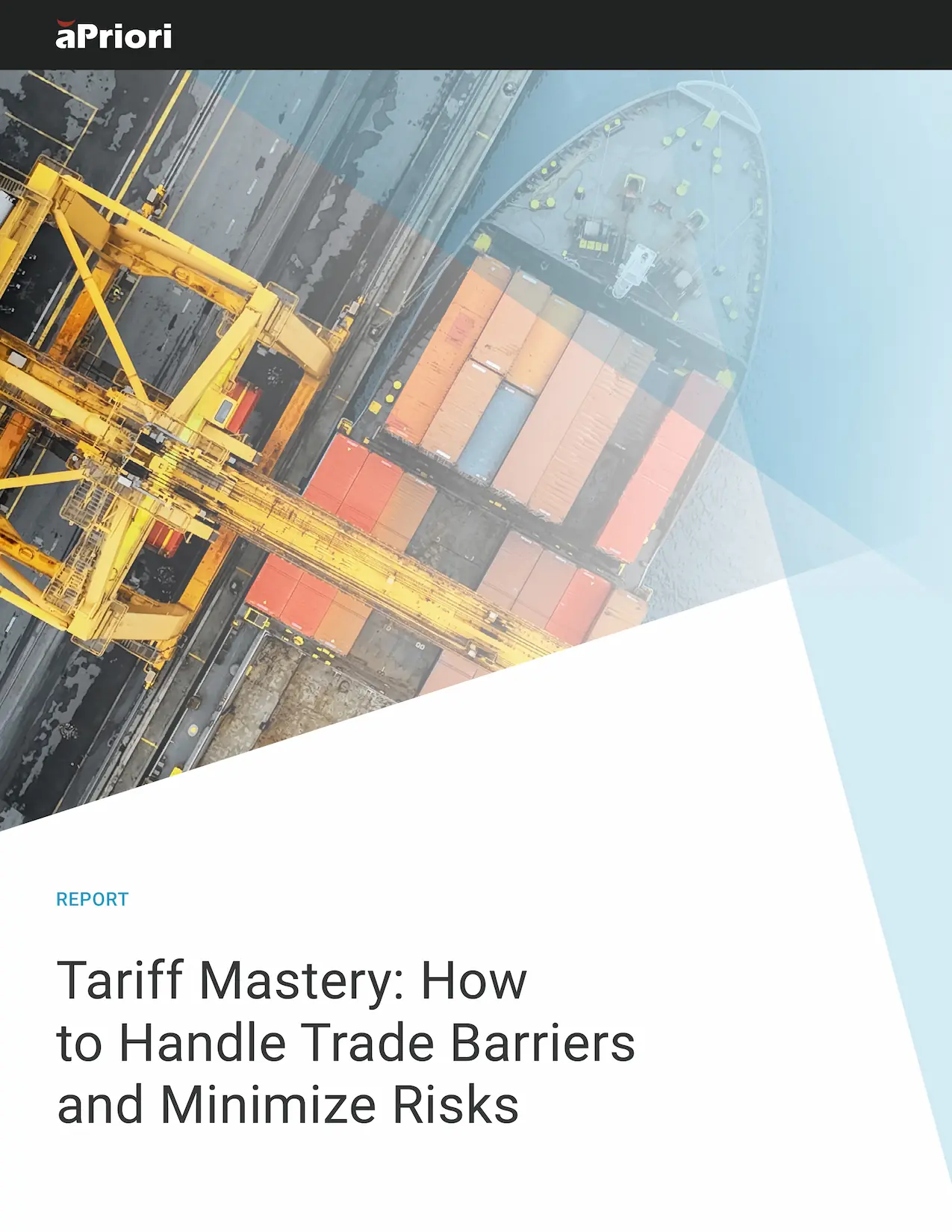Navigating Tariffs: Our Guide Helps Manufacturers Break Through Trade Barriers & Mitigate Risks
Key Takeaways:
- Tariffs loom large on everyone’s radar today
- Our new tariff guide breaks down the complex challenges around them and provides short, near, and long term strategies to reduce risks and empower impacted manufacturers
The Full Article:
The unpredictability of tariffs has left many manufacturers and suppliers scrambling.
Manufacturers need to understand that tariffs can significantly impact their operations and profitability. Tariff costs of imported raw materials increase, leading to higher production costs and reduced profit margins.
For example, a 25% tariff increase on steel imports or a 10% tariff on aluminum imports can make sourcing these materials more expensive, forcing manufacturers to either raise prices or find cost-saving measures elsewhere.
Tariffs can also create supply chain inefficiencies, impact customer relationships, and reduce competitiveness. Manufacturers may need to look for alternative domestic suppliers, which can result in potential delays, higher logistics costs, and product quality, performance, or consistency issues. Volatile tariffs can also compromise profitability and disrupt production schedules, since manufacturers may not have enough time to renegotiate contracts or shift suppliers quickly.
So, what can manufacturers do to take a more proactive stance on tariffs? How can they minimize risks without sacrificing profitability or product quality?
Our New Tariff Guide Answers These Questions and More
We’ve created a new guide, “Tariff Mastery: How to Handle Trade Barriers and Minimize Risks”, to help manufacturers and suppliers navigate the complexities of tariffs.
aPriori’s data-driven insights to help manufacturers navigate these challenges. From a financial perspective, they can also mitigate the tariff impacts by providing granular data on material usage, product cost structures, and alternative sourcing options.
For instance, aPriori’s Material Consumption Report can identify critical materials affected by tariffs and quantify their usage across product lines. This allows manufacturers to assess the financial impact on each component and the overall product cost, enabling them to make informed decisions about shifting production or sourcing to regions with lower tariffs.
Our guide covers:
- Tariff challenges and their supply chain impact, as well as on the labor force and cost for both OEMs and suppliers
- aPriori’s capabilities to help manufacturers navigate the new tariff landscape
- Short, near, and long term strategies to mitigate risks and navigate an unpredictable landscape
- How to better forecast if profitability will be impacted by the new trade policies
- Tariff FAQs
aPriori facilitates collaboration between product development teams to create mitigation strategies. By running what-if scenarios that simulate and analyze costs in different locations, manufacturers can optimize their supply chains and maintain profitability despite tariff challenges. This proactive approach helps manufacturers stay competitive and resilient in a volatile global trade environment.
aPriori: Your Ally in Navigating Tariffs and Minimizing Risks
It helps to have an ally in uncertain times. aPriori does just that as you navigate a tenuous environment.
Manufacturers can take a proactive, data-driven approach to tariffs. As a result, they can mitigate risks, while optimizing their supply chains, reducing costs, and remaining a competitive force.
Break Through Trade Barriers: Our Guide Shows You How
Approach tariffs proactively, leveraging aPriori to minimize risk, ensure profitability on products impacted by new tariff policies, strengthen supply chain agility, and more.








